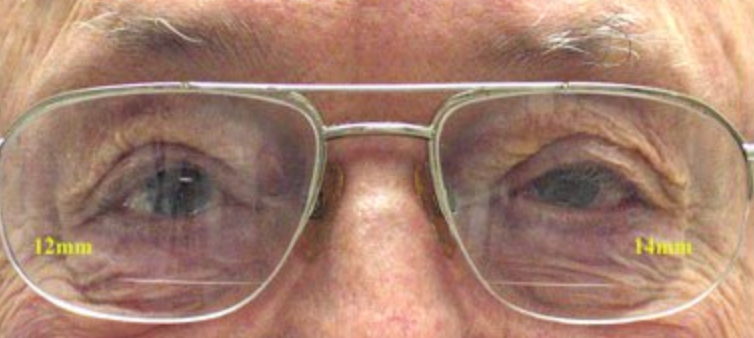
Welcome to Question of the Day #357
EyeTools Question of the Day #357
I’ve I’Many of my patients are older and some have age-related macular degeneration with bilateral central visual field defects. What type of lens form should I advise them to have?.


I’ve seen patients recently with bilateral central visual field defects due to age-related macular degeneration and who have been prescribed flat-top bifocals by their previous eye care specialist. For one patient the top of the bifocal segment was 8 mm below her lower eyelid margin and the segment had a depth of only 5 mm.
I’ve seen patients recently with bilateral central visual field defects due to age-related macular degeneration and who have been prescribed flat-top bifocals by their previous eye care specialist.I have recently started to ask all the patients I see if they have gritty and/or watery eyes even if they don’t mention it in their presenting symptoms.
For one patient the top of the bifocal segment was 8 mm below her lower eyelid margin and the segment had a depth of only 5 mm. When I examine people with bilateral central visual field loss I can see that they struggle to find and look through the bifocal segment because the central visual field loss prevents them from ‘finding’ the bifocal segment. Even when they do find the bifocal the field of view is filled with the central visual field loss and reading is difficult.
For those people who benefit from a high reading add (+3.00 and above), I always advise a single-vision reading glass. Less of the field of view is affected by the central visual loss and even though reading can still be difficult it is often better than with the previous bifocal. I always advise local lighting and this also helps.
For those people who need more than a high add to read smaller print, I often advise a hand-held illuminated magnifier as long as they have the strength and steadiness to hold a magnifier for at least 10 minutes so that they can read for a reasonable amount of time with short periods of rest.
When a hand magnifier is held at its focal length the light coming out of the lens toward the patient’s eyes is parallel and this means they will need to use glasses with the distance lenses. This is counterintuitive and many patients think they should use reading lenses or the bifocal segment in bifocals with a hand magnifier. Reading is possible with a hand magnifier and reading lenses or a bifocal segment but reading is optimal when a hand magnifier is used with distance glasses.
I recommend single vision distance glasses for reading with a hand magnifier and often refer to them as ‘the magnifier glasses’. I explain this to the patient and also any family or carers who accompany them. As I have mentioned above, using distance glasses with a hand magnifier held at its focal length creates parallel emergent light and this means that the patient can move their head close to the magnifier without any optical disadvantage and get a good field of view.
These points are all simple and easy to achieve but are counterintuitive and unless you know about them you can end up giving your patients poor advice and make it unnecessarily difficult for them to read.



1.jpg)



.jpg)
.jpg)



_(Instagram_Post).jpg)
.jpg)
_(1080_x_1080_px).jpg)


with_UP_Cabinet_Minister_Sh_Nand_Gopal_Gupta_at_OpticsFair_demonstrating_Refraction.jpg)
with_UP_Cabinet_Minister_Sh_Nand_Gopal_Gupta_at_OpticsFair_demonstrating_Refraction_(1).jpg)

.jpg)








.jpg)



.png)




